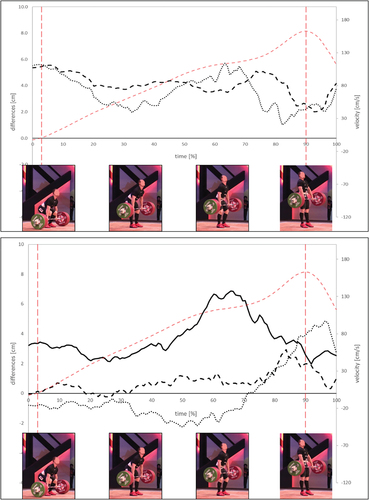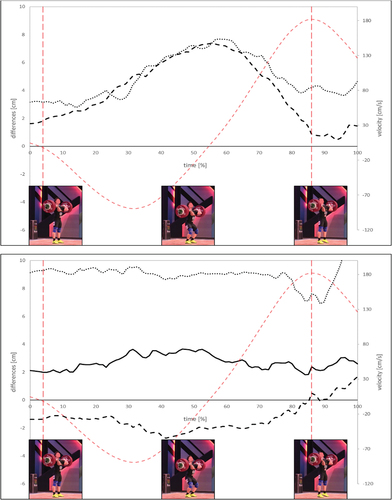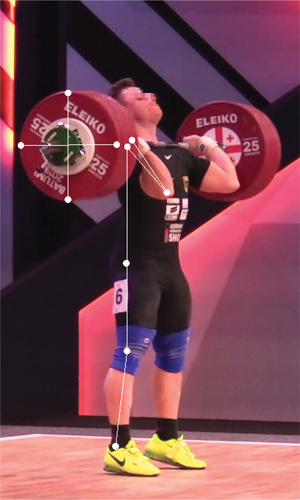Figures & data
Table 1. Body segments and their adjacent anatomical landmarks used for segment length measurements.
Figure 4. Differences of the segment lengths between 2D and 3D assessment during the clean: red lines = vertical barbell velocity (vertical red lines = left - barbell lift off, right - maximum vertical barbell velocity), black lines in top graph: dotted line = thigh, dashed line = shank, black lines in bottom graph: dotted line = upper arm, dashed line = forearm, solid line =trunk.

Figure 5. Differences of the segment lengths between 2D and 3D assessment during the jerk: red lines = vertical barbell velocity (vertical red lines = left - barbell lift off, right - maximum vertical barbell velocity), black lines in top graph: dotted line = thigh, dashed line = shank, black lines in bottom graph: dotted line = upper arm, dashed line = forearm, solid line =trunk.

Table 2. Statistical measures of concurrent validity of 2D segment length measurements. Bold data represent smallest absolute measurement error for each body segment.
Figure 6. Deming and Bland-Altman analysis of the agreement of 2D and 3D segment lengths. Only comparison with the best concurrent validity results per segment are shown. Deming regression is shown with fitted linear model (dashed line) and the identity line (2D = 3D, slope = 1; solid line). Bland-Altman plots show the lower and upper limits of agreement (dashed lines) and the systematic bias (solid lines). Bland-Altman plots of shank, thigh, trunk and upper arm show “raw” data, whereas re-calibrated data from Deming regression is shown in the Bland-Altman plot of the forearm, since significant, constant and proportional bias was found.

Table 3. Measures of test-retest reliability in 2D measurements.
Data availability statement
The data presented in this study are available on request from the corresponding author. The data are not publicly available due to privacy or ethical restrictions.



